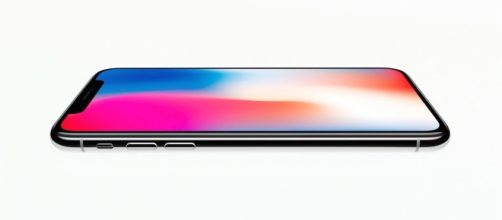Apple has officially introduced its advanced smartphone to-date, the iPhone X. The name is pronounced as “ten” - not the letter “X.” The iPhone X marks the iPhone’s 10th-year-anniversary.
The latest Apple phone completely veered away from the traditional iPhone design. Powered by iOS 11, the iPhone X has an almost bezel-free OLED display with no physical home button and comes with wireless charging. But more than its physical features, iPhone X brings two completely redesigned cameras.
Unlocking iPhone X
The 7MP front camera system is composed of an infrared camera, flood illuminator, proximity sensor, an ambient light sensor, and a dot projector.
With these features, not only can it digitally seize magical moments; it was actually designed to replace the old-fashioned security feature of the iPhone.
The iPhone X's front camera is integrated with a true-depth camera system - a depth-sensing technology that enables the user to unlock their phone using their face. It uses a feature called Face ID which identifies the geometry of the owner’s face by using more than 30K invisible dots. So whether in the dark or wearing a cap, the iPhone X can still recognize the face of its owner.
Animoji
Using the same true-depth camera feature, the front camera can also be used on Apple Pay app. This was one more feature that brought a smile to all attendees.
The new exciting feature is called Animoji.
Derived from the words "animated emoji," Animoji enables the user to send animated emoji via Apple messaging. This animated emoji is derived from more than fifty facial muscle movements which capture the user’s facial expression in real time - how they talk and even move their head. Users then choose from dozens of available characters to replace their face before sending the message.
The redesigned rear camera
The completely redesigned dual 12MP rear camera system of the iPhone X comes with a dual optical image stabilization feature. It has a wide camera (f/1.8 aperture) and tele-camera (f/2.4 aperture) and has the ability to capture slow motion at 1080p up to 240fps.
The rear camera supports VR recording and playback. Plus, the power of Apple's newest A11 processor allows the iPhone X's rear camera to detect the actual scenery and optimize all its elements before capturing that perfect shot. Apple also envisioned the iOS 11 will become the largest platform for Augmented Reality (AR) with its first product being the iPhone X.
The iPhone X also comes with a new portrait mode with portrait lighting. Portrait lighting is based on fundamental photographic principles which give the actual effect of an actual studio. One can choose from a range of portrait elements that includes a black and white image with a completely black background. The front camera can also capture portrait mode.
The iPhone X will be available in two variants: the base 64GB model tagged at $999 and the 256GB model for $1149. Pre-orders will commence on October 27 and will become available to the market by November 3rd.


